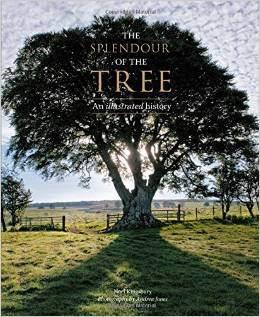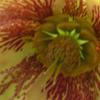
I am catching up on some book reviews and wanted to share The Splendour of the Tree by Noel Kingsbury with you. I had anticipated that it would be a book showing various trees, conditions needed, maybe a diagram of their eventual shape, a few photos of fruit, leaves and bark. However, if I had looked properly I would have noticed the tag line (is that the right term?) – ‘An illustrated history’ and I wouldn’t have been so surprised when I opened the book.
The book is split into a number of sections in which the various trees are grouped: antiquity, ecology, sacred, utility, food and ornament. Each tree has at least two pages, some a few more. The narrative commences with a very brief list of facts including the geographical origin of the tree, a brief description, its size, potential age and climate. Then Noel Kingsbury goes on to tell us about the tree and without fail each short essay is full of interesting information and facts which make you sit up and take notice.
For example when reading about the English Elm (Ulmus procera) I learnt that the reason Dutch Elm Disease was so destructive is because without fail all English Elms are the same clone so there is no variation or mutation which can combat the disease. The Araucaria araucana or Monkey Puzzle is so called because it is a puzzle how monkeys would climb it or even eat it; its French name desespoir des singes translates to monkey’s despair which I prefer! The Judas Tree (Cercis siliquastrum) is not called this because Judas hung himself from one, after betraying Christ (the branches are too brittle and the trees dont grow tall enough); instead it is named after Judaea, a region of Israel and Palestine, from where the tree originates.
Kingsbury’s writing is accessible and informative without feeling like you are being talked at or taught. He not only tells us about the use of the various trees, where they originate from and some interesting information but also in many cases he relates them to the humans that live with the various species such as the people in South East Asia who plant out seedlings of Teak (Tectona grandis) in order to maintain the supply of this tree which is so important to their economy. As Kingsbury says in the introduction the involvement of man in the history of the trees came up again and again when he was researching the book whether it was in terms of destruction or the trees ability to grow where they are not wanted – such as the Australian eucalyptus growing in the high plains of Bolivia.
The narrative is accompanied by wonderful photographs by Andrea Jones but unusually for many books of this size (typical coffee table book size) the narrative, in my view, takes precedence over the photographs rather than accompanying them.
Not only will you learn all sorts of things about your favorite trees but you will learn about trees you have never heard of. I am passing this book, The Splendour of the Tree, onto my eldest son, the cabinet maker, who is passionate about wood and will I know love it.

